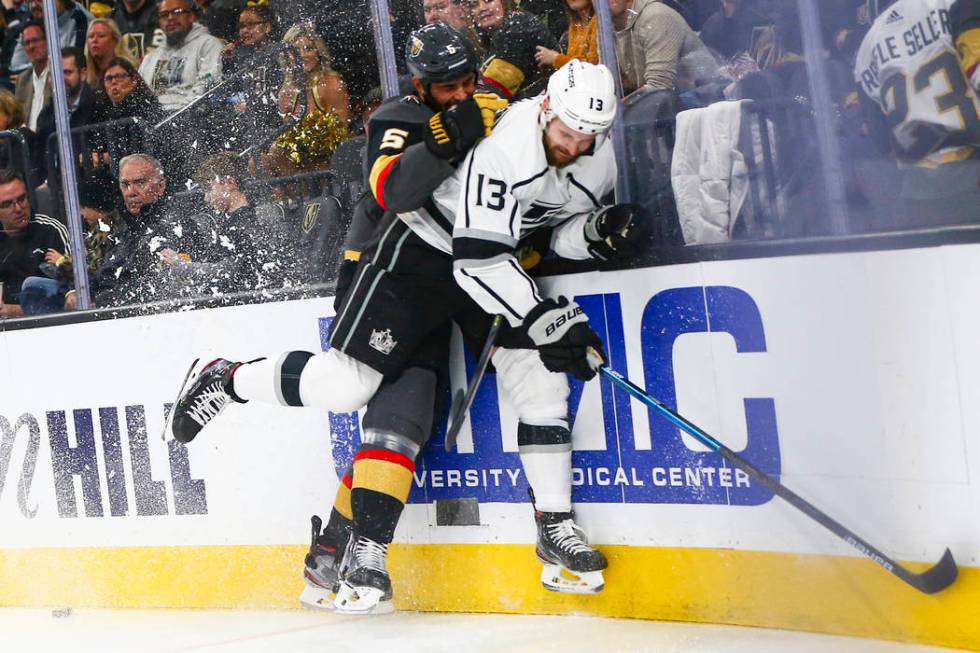Here’s how the NHL concussion protocol works

The Golden Knights are tight-lipped when it comes to discussing injuries, especially suspected concussions.
But the club is required to follow the NHL/NHLPA Concussion Evaluation and Management Protocol, which details the procedures for concussion education, testing, identification, evaluation and management.
According to the protocol, players are required to be removed from games for concussion evaluation if any of the following visible signs occurs after a direct blow to the head or a blow to the body that causes acceleration/deceleration of the head:
a) “Lying Motionless on the Ice;”
b) “Motor Incoordination/Balance Problems:” A player staggers, struggles to get up or skate properly, appears to lose his balance, trips or falls, or stumbles while getting up, trying to get up, or skating;
c) “Blank or Vacant Look;”
d) “Slow to Get Up” or “Clutches his Head.”
If a player reports feeling concussion symptoms, he also must be removed for evaluation.
Similar to the NFL, league spotters (in the arena and at a central league office) observe games and help clubs identify players exhibiting visible signs of a concussion after a direct or indirect blow to the head. A player is required to be removed and evaluated if a Central League Spotter determines that an evaluation is necessary.
For clubs that do not comply with the concussion protocol, a minimum fine of $25,000 will be assessed. Subsequent violations in the same season will result in “substantially increased fine amounts.”
Once a player is determined by the club physician to be free of concussion-related symptoms, the player must be cleared for on-ice activity by the club’s consulting neuropsychologist.
A player may return to unrestricted play when:
(1) “There is complete recovery of concussion-related symptoms at rest;”
(2) “There is no emergence of concussion-related symptoms at exertion levels required for competitive play and a graded return-to-play progression has been completed;”
(3) “The player has been judged by the club’s physician to have returned to his neurological baseline and neurocognitive baseline following an evaluation by the club consulting neuropsychologist.”
Club physicians are responsible for diagnosing a concussion and determining when a player may return.
Contact David Schoen at dschoen@reviewjournal.com or 702-387-5203. Follow @DavidSchoenLVRJ on Twitter.